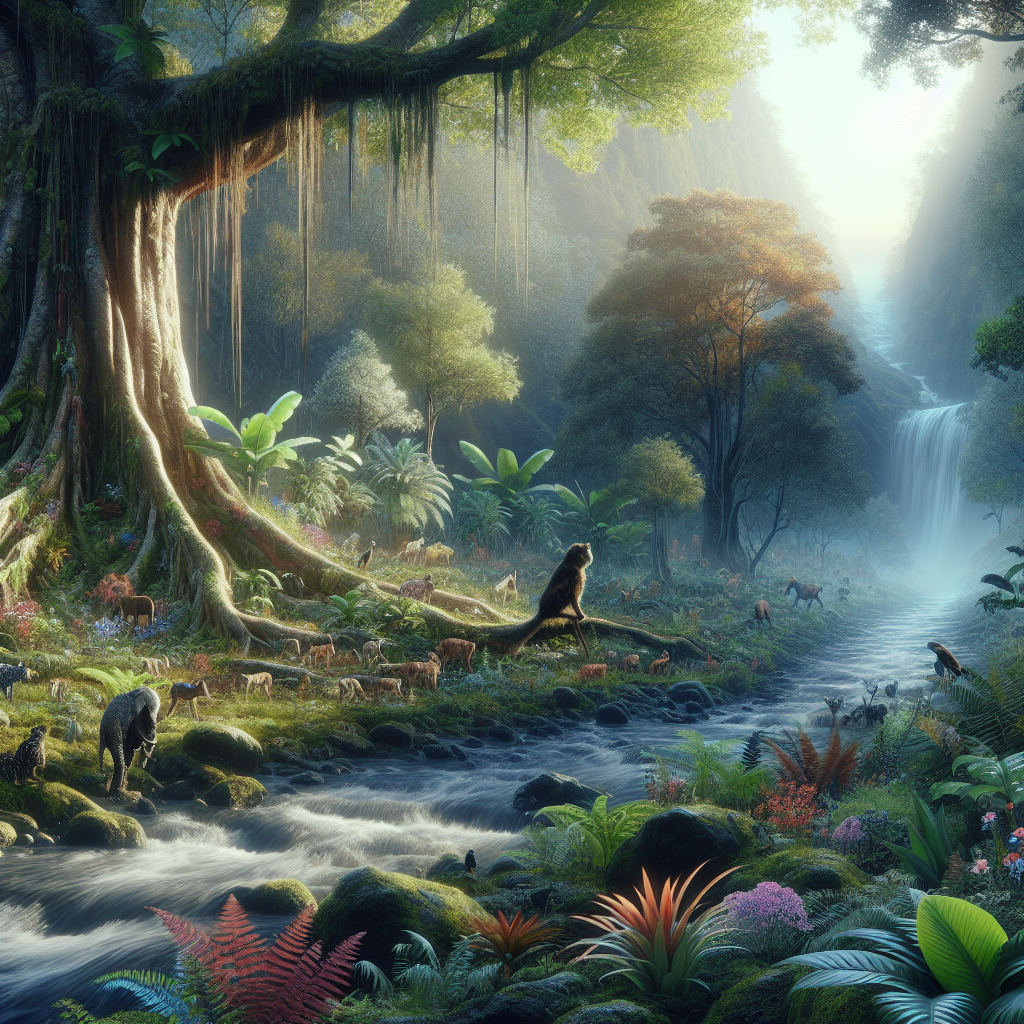When a whimsical rainforest meets a heavy-handed dose of tree-hugging propaganda, you get "FernGully: The Last Rainforest." This 1992 animated fantasy film directed by Bill Kroyer is set in the lush Australian rainforest and features a magical world inhabited by fairies. It's a classic '90s children's tale starring a fairy named Crysta, who's about to get a reality check as she faces the encroaching dangers of human industrialization—aka, the dreaded logging company. Naturally, the film rolls out the tired trope of humans recklessly destroying nature without a second thought, with an enchanted dimension, complete with singing bats and malevolent pollution spirits, thrown for razzle-dazzle. The barebones setting of FernGully screams a need for ideological landscaping.
Let's get to the core here: "FernGully" is basically the animated love child of anti-capitalist sentiment and eco-anxiety. Through the first note, the film positions itself as an environmental wakeup call. Fairies and certain flying mammals (voiced by the legendary Robin Williams) are pitted against humans who are portrayed as thoughtless destroyers. The film drives home the dreamy notion that if we just hold hands with Mother Earth and hum a few jingles, all ecological woes will miraculously dissipate. However, it's hard to ignore the glaring lack of nuance here. Plot twist—it’s not always the evil corporations ravaging the Earth; the rest of us are along for the ride, enjoying all the benefits that come with modernity, such as electricity and shelter.
Now, let's talk stock characters. Crysta, our fairy protagonist, lives in blissful ignorance until she discovers that her idyllic home is under threat. She shrinks a reckless teenager named Zak, who's unwittingly part of the logging operation, down to fairy size. It’s the classic tactic: reduce the human influence to make them understand nature. Unfortunately, Zak’s journey of awareness is about as subtle as a jackhammer in a library. Their dynamic is crafted in overly simplistic terms—careless human learns from wise nature guardian, wins over the forest folks with charm, and starts feeling guilty about his species. As for the antagonist, we have Hexxus, a pollution spirit, whose menacing presence is meant to symbolize the poison of industrialization. Never mind that modern medicine and technology have been brought about largely by this same industry!
While the animation of "FernGully" was praised as vivid and filled with lush visuals, the storyline tends to veer more toward fairytale than fact. The environmental message weaves through the narrative with the grace of a sledgehammer, constantly emphasizing the belief that humans are the root of all Earth's problems. Ironically, the film was made using massive animation studios that relied on abundant resources. The hypocrisy here is interesting but overlooked by many fans hardened by rose-colored nostalgia. Let’s not forget the irony of driving your car to watch a movie about pollution!
The movie's creators clearly wanted to send viewers, especially young ones, a green message: Preserve the trees at all costs! But in practice, how feasible is this kind of forest worship in our daily lives? The truth is a little more complicated. Humanity's progress can’t simply be swept away for pristine wilderness. Our society depends on a cultivated balance—innovation has brought comfort and security that was unfathomable to past generations. Folks need to come to grips with the fact that some level of environmental impact is inevitable if we’re all going to continue enjoying the fruits of modern life.
While "FernGully" resonates with those yearning to escape the urban sprawl, it glosses over the need for thoughtful compromise when it comes to nature and industry. It’s easy to side with magical creatures when they sing about saving the forest, but the reality is far less black and white. The dreamy notion that purity and innocence belong to nature alone ignores humanity’s responsibilities and accomplishments. But, finding some common ground with the environmental movement isn’t about bowing to every wish of extreme conservationists. Instead, it’s about rational progress that keeps both the economy and environment flourishing.
For all its purported good intentions, "FernGully: The Last Rainforest" tends to come off as an artful caricature of environmentalism. By romanticizing nature and vilifying industry, it paints an unrealistic picture of the world, bypassing the complexities of real-life ecological and economic partnerships. Sure, the film's heart is in the right place, but its brain could use a bit more critical self-reflection. As audiences continue to watch this movie throughout the years, it’s crucial to remember the allure of its fairy tale often glosses over the realities of balanced stewardship. After all, every tale has two sides, even "FernGully's" lushly-painted narrative.

